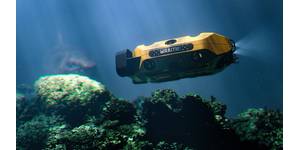Marine Technology Reporter Blogs - waste
Potential Environmental Consequences of Deep Sea Mining

In order for deep sea mining to be safely implemented, it is necessary to ensure the protection of sensitive ecosystems and minimize the potential environmental impact of the mining operations. Hydrothermal vents are the primary source for deep sea minerals. The magma below these vents heats the surrounding seawater, which causes metals within the sediment to leach into the water. The subsequent shock of the cold water causes the metals to precipitate and form as solids in the sediment surrounding the vents. Because of these high concentrations, most deep sea mining would occur in the chimneys above the vents. The vents themselves would be preserved undamaged, but the chimneys would be destroyed in order to mine the metals encrusted on them.
Naturally-Occurring Radioactive Materials in the O&G industry

Nuvia is one of the leading provider of Naturally Occurring Radioactive Material (NORM) management services in the UK. According to the U.S. Geologists have recognized their presence since the early 1930s and use their presence as a method for finding petroleum systems. Much of the petroleum in the earth's crust was created at the site of ancients seas by the decay of sea life. As a result, petroleum deposits often occur in aquifers containing brine (salt water). Radionuclides, along with other minerals that are dissolved in the brine, precipitate (separate and settle) out forming various wastes at the surface, such as mineneral scales inside drilling and production pipe, sludges, contaminated equipment or components and produced waters.
Future of AUVs in Brazil

With companies such as Kongsberg and ECA bringing state of the art AUV models into the Brazilian market, and with the great demand for AUV services from the O&G industry, government agencies and universities, the future of AUVs in Brazil looks really promising. Presently, most AUVs are being employed by the O&G industry for pipeline routing and monitoring, seabed mapping and other specialized services. However there is a growing demand from academia to employ AUVs is oceanographic research and environmental research, this is an important development because it will allow universities to have unprecedented leverage to undertake complex research programs from shallow water to the deepest ocean basins off Brazil and off all the eastern South American coastline…


 August 2025
August 2025



